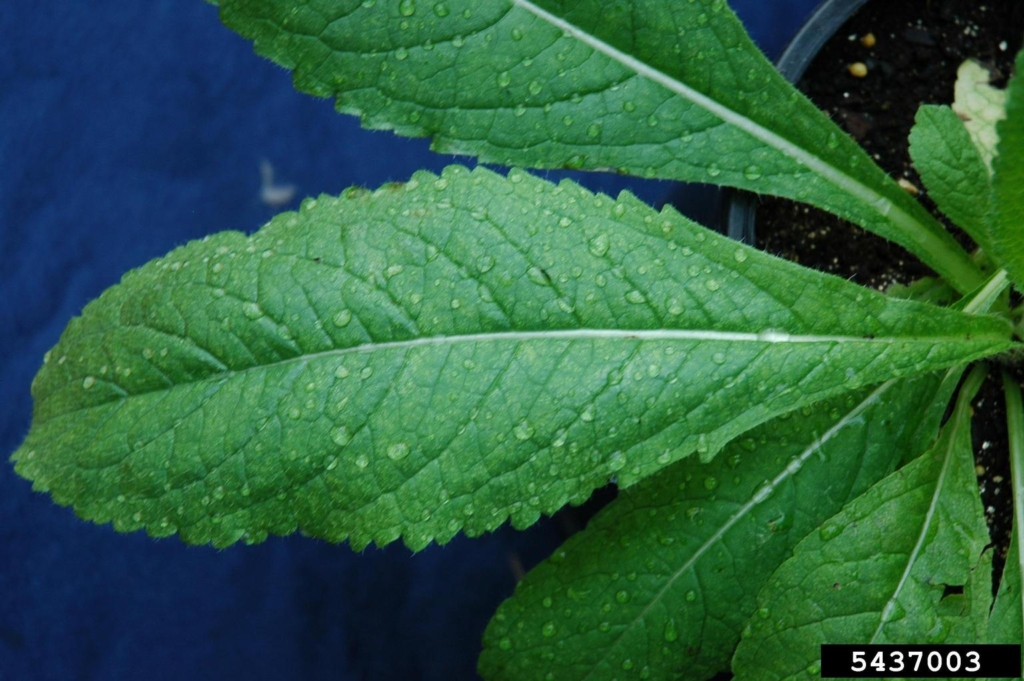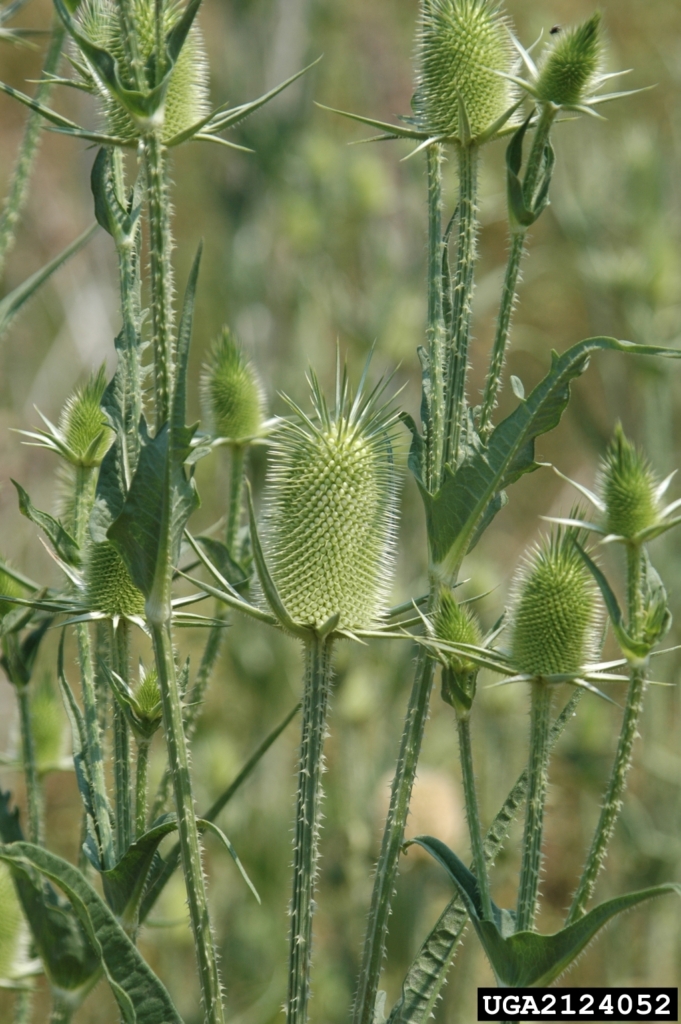Cutleaf Teasel
Dipsacus laciniatus
Plant Description
A biennial forb with a large taproot, and many small white flowers in terminal heads, enveloped by spiny bracts. Deeply lobed leaves create fused cups that collect rainwater on prickly flowering stalks.
Plant Details
| Life Forms | |
|---|---|
| Habitats | |
| ODA Listing | |
| Soil and Moisture Conditions | |
| Suggested Actions | |
| Shade Preference | |
| Mature Height | up to 7' |
| Distribution | Known populations exisit in Southern Oregon |
| Control | belowground cutting is most effective just before the plant flowers. |
| Disposal Methods | Dispose of cut stems in sealed bags because they may still produce viable seeds. |
| Reproduction and Spread | Seeds are dispersed by animals and water. They are also dispesred by human collection and use of dried teasel flower heads. |
| Introduced | Introduced from Europe in the 1700s. |
| Look Alikes | Common teasel |
| Impact | Forms large stands that outcompete desirable vegetation and negatively impact riparian areas. |
| More Info |
© Marion Soil and Water Conservation District. All Rights Reserved.


